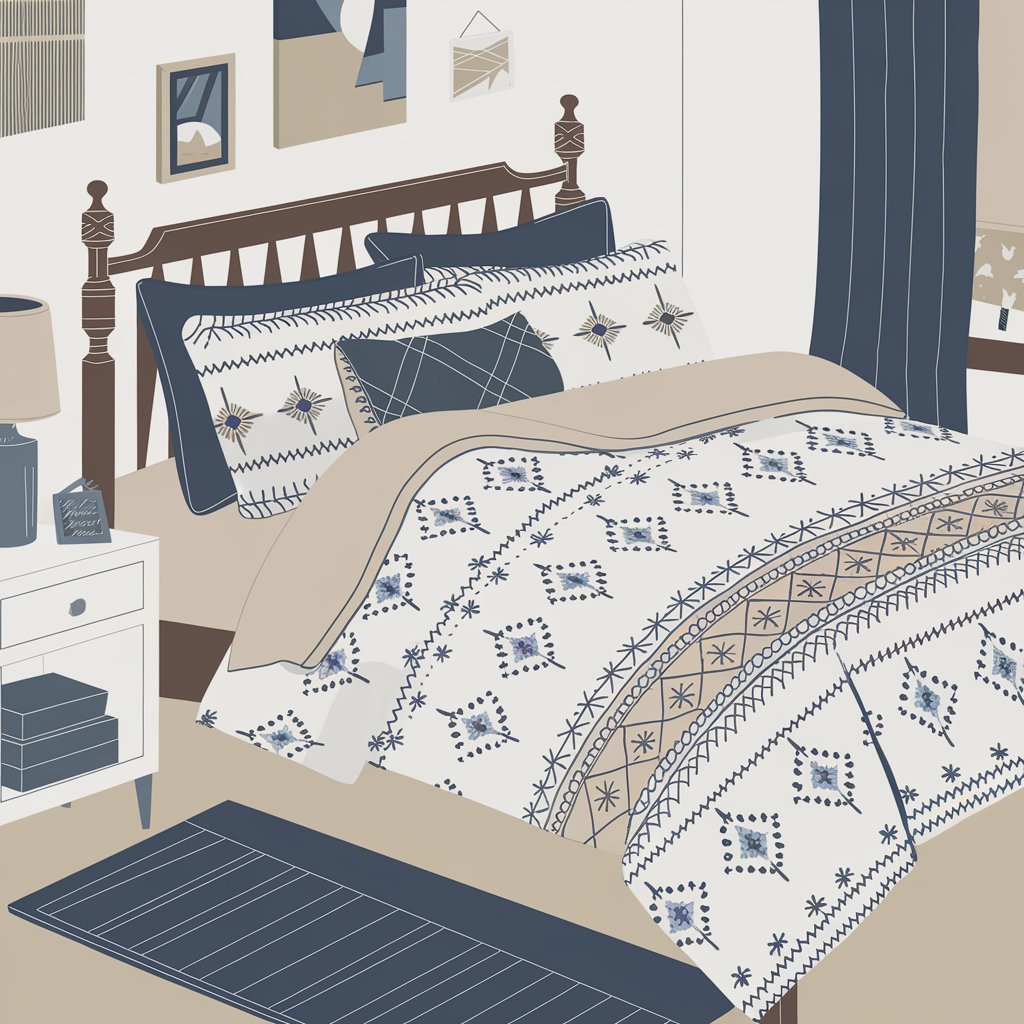Today’s world of interior design is all about creating sustainable spaces that can also be stylish and beautiful. This is an interest of homeowners and designers who are looking for means of addressing this ever-increasing challenge. A relatively discovery in this search for sustainable sophistication is the natural hand-block print fabric made of organic fabric. Such special fabrics not only impart elegance to the place but least affect the environment compared to machine-made fabrics. Why they are the fabric of the future of Home Décor? It is time together to find out.
- Craftsmanship and Sustainable Development
Organic hand-block print fabric touches the roots of ethnicity, traditional art, and essential values of society – quality, aesthetics, and sustainability. This technique again deals with professionally trained workers who inscribe patterns on wooden Blocks to produce hand-stamped fabrics. Compared to industrial printing which uses chemicals and mechanical equipment, block printing is an eco-friendly undertaking that uses natural dyes and organic materials.
Selecting such materials as cotton or linen, the consumer not only preserves hand-artisanal craft but also purchases material that has been produced without toxic pesticides, chemicals, and synthetic dyes. These environmental considerations make demands that guarantee that these fabrics are better for the environment and homes and families.
 2. Environmentally Non-Hazardous Livestock Rearing
2. Environmentally Non-Hazardous Livestock Rearing
Organic hand block print fabric manufacturing is far less resource-consumptive than that of the traditional textile industry. It is disclosed that organic cotton, for example, requires only an eighth of the water that the conventional type needs, and does not undergo such chemical solutions as cause pollution of the soil and water systems.
Furthermore, conventional dyes utilized in organic block printing include plant, fruits, and mineral origin much of the time. It is worth mentioning that these are biodegradable dyes that give beautiful and brilliant shades and, in contrast to conventional synthetic dyes, hurt water living organisms, and the environment in general. Such a production process is consistent with the general trend toward sustainability indicated by consumers about home décor products.
3. Uniqueness and Customization
There is one more useful quality of the fabrics made with the use of organic hand-block print – they are all different. All the fabrics are hand-printed, which makes it even impossible to buy two similar pieces of any item. This gives it an authentic feel adding even more value to home decor as well as making each item look like a piece of art.
People whose homes’ interior design they want to be unique will find block-printed fabrics to provide as many choices as they can imagine. When it comes to wreath designs, you do not have to worry about what design to pick because there are many of them ranging from complex flowers to simple geometrical patterns. In addition, it provides a choice between organic fibers and natural dyes to guarantee that this fabric both harmonizes with a particular space and contributes positively to a person’s well-being.
4. Ease of Maintenance
In a world where trends are rapidly changing and home décor is focused on being compact, easy on the wallet, and easy on the eyes; hand-block prints and fabrics are sturdy. These fabrics are usually woven with an appreciation of quality and also durability so that they do not fade as they are used throughout the day. Organic cotton and linen, for instance, are very strong fabrics and undergo a utilitarian application such as fabrics for furniture, curtains, and cushions among others.
Further, hand block prints stay fashionable less which indicates that these fabrics can easily fit into styles of the current and even rustic home design. Homeowners get to work with fabrics that are durable and be able to have trendy interior spaces for many years.
5. Empowering Artisan Groups
If you decide to decorate your home with organic hand block print fabrics you are not only making an environmentally friendly decision but also facilitating the craft of the artisans who use this technique. The majority of block printing artisans are located in rural areas of countries such as India because it tends to be a family business tradition. Consumers get to support these communities and help maintain a form of art that is so endangered by huge factories and production lines. This form of conscious consumption takes the act of home decorating one step beyond in terms of making and meaning.
6. The Future of Home Design for Green Living
With the ever-increasing trend towards buying environmentally friendly and socially responsible products, organic hand-block print fabrics will remain relevant in home decoration in the years to come. It fully matches today’s consumer trend, where the product should be attractive to look at as well as protect the environment.
As fashion production becomes more sustainable, using eco-friendly materials, the demand for sustainable products has also increased including those used in home design. Hand-block print fabrics have become organic and unique in their making as it supplement the environmentally conscious theme.
Conclusion
The future is sustainable, and organic hand-block print fabrics are the future of home decor. These textiles marry the artisanal aesthetics of handweaver with modern earth-friendliness, providing a sophisticated and sensible solution for today’s inhabitants. Organic hand-block print fabrics will have even higher demand in the future as people have finally understood the significance of sustainability in daily lives so the homes of the future will be created thanks to these fabrics.
Making any of these fabrics into home furniture and accessories is not only fashionable but also an affirmation of sustainable living.



